Bending Beam Rheometer: Guide to Testing Pavement Quality

Pavement quality plays a pivotal role in ensuring a safe and comfortable driving experience. One critical aspect of pavement quality is the performance of asphalt binders, which can significantly impact the pavement’s lifespan and resistance to cracking. The Bending Beam Rheometer (BBR) test has emerged as an indispensable tool for evaluating asphalt binder performance, particularly in low-temperature conditions. In this post, we will delve into the intricacies of BBR testing, its applications, and its importance in the realm of pavement engineering.
Key Takeaways
-
Bending Beam Rheometer (BBR) testing measures the stiffness and relaxation properties of asphalt binders to assess pavement quality.
-
BBR tests measure two key parameters: creep stiffness and stress relaxation rate, which are used to evaluate the performance of asphalt binders.
-
Real world applications include improved pavement design, construction, maintenance decisions for durable road safety performance.
Understanding the Bending Beam Rheometer
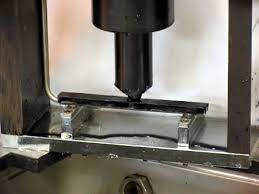
The BBR test involves the use of several components:
-
Fluid bath base unit
-
Three-point bend test apparatus
-
External cooling unit with temperature controller
-
Calibration hardware kit with carrying case
These components are used to measure the low-temperature stiffness and relaxation properties of asphalt binders. The BBR test is key to assessing the bending moment in the asphalt binder and can aid bending analysis.
The need for a more efficient laboratory test led to the use of the time-temperature superposition principle, reducing the duration of the BBR test from the initial 2-hour test. The BBR operates by subjecting a thin beam of asphalt binder to a bending load or test load at a regulated temperature.
The Science Behind BBR
The BBR measures the stiffness and relaxation characteristics of the asphalt binder, providing crucial insights into its performance under various temperature conditions. The BBR employs a linear, variable-displacement transducer (LVDT) to measure deflection and a temperature-compensating 500g load cell to measure load. The test is founded upon the principle of ascertaining the low-temperature stiffness and relaxation characteristics of the binder, regardless of its shape or circular cross-section.
Executing a BBR test requires specific materials and equipment:
-
Asphalt binder specimens
-
A Bending Beam Rheometer (BBR) machine
-
Testing accessories for specimen preparation and loading
-
Measurement devices for tracking deflection and other parameters during the test
-
Data sheets for logging the results
The asphalt binder sample for a BBR test is typically prepared by taking an amount of asphalt binder, usually around 15 grams per beam specimen, and utilizing it for the test, ensuring a consistent cross-section width and beam thickness for accurate results.
BBR Testing Procedure
The BBR testing procedure requires detailed sample preparation and maintenance of the neutral axis of the beam throughout the test. By applying a static stress to a beam of bitumen, the BBR measures the strain rate, which contributes to the stress relaxation rate. This process considers the extreme fiber of the asphalt binder. The load is typically applied to the beam’s center, with the resulting deflection monitored over time.
The BBR test evaluates creep stiffness and stress relaxation rate, essential for ascertaining asphalt binder performance, similar to the evaluation of I beams in structural engineering. The precise steps in the BBR testing procedure for asphalt binders include preparing the asphalt binder sample meticulously, ensuring the neutral axis of the beam is maintained during the test.
Asphalt Binder Performance Grading

Asphalt Binder Performance Grading is a system that classifies asphalt binders based on their properties and how they perform under specific conditions, including how well the binder performs binding in pavement applications. The BBR test is utilized in Asphalt Binder Performance Grading to assess the low-temperature stiffness and relaxation characteristics of asphalt binders, ensuring that the pavement does not behave like unbound papers under stress.
Asphalt binder grading standards are laid down by AASHTO M 320 or ASTM D6373, outlining the criteria and testing methods for performance grading of asphalt binders, inclusive of tests assisting in bending analysis. The assessment of asphalt binder performance grading considers factors such as:
-
Traffic conditions
-
Pavement temperature
-
Binder viscosity
-
Short-term asphalt binder aging
-
Internal stresses
Performance grading facilitates guaranteeing the quality and durability of pavement materials by selecting asphalt binders that will offer acceptable performance in terms of rutting and cracking over a range of temperatures at a project location.
Superpave Specification Logic
Superpave specification logic uses BBR test results to anticipate thermal stress in pavement and identify the critical cracking temperature. The reasoning behind the Superpave specification logic is to guarantee the strength and effectiveness of asphalt pavements. It incorporates restrictions on particle size distribution, binder attributes, and aggregate gradation to maximize the mix design and counter typical distresses such as rutting and fatigue cracking. The Superpave system directly connects the measured physical properties of asphalt binders to field performance, allowing for more precise and dependable pavement designs.
The Superpave specification logic utilizes the low-temperature response of asphalt measured from field cores to predict thermal stress in pavements using BBR test results. The BBR test results are employed to calculate thermal stresses in pavements, thus aiding in the assessment of the performance and durability of the asphalt mixture under low-temperature conditions. The Superpave PG binder specification utilizes BBR test results to ascertain an asphalt binder’s low-temperature performance grade.
Current Reporting Method
Previously, essential reporting values in BBR included creep stiffness at 60 seconds and the slope of the master stiffness curve at 60 seconds (m-value). The maximum creep stiffness value stipulated in the superseded reporting method was equal to 300 MPa, and the minimum m-value indicated was 0.300. In this context, it is important to consider the maximum stress that materials can withstand.
The current reporting method highlights the pacing rate/sending rate and CWND. It determines the creep stiffness by calculating the flexural-creep stiffness or compliance and m-value of asphalt binders using a bending beam rheometer.
This method overcomes the limitations of the superseded method and provides a more accurate and comprehensive evaluation of asphalt binder performance.
Key Parameters Measured by BBR
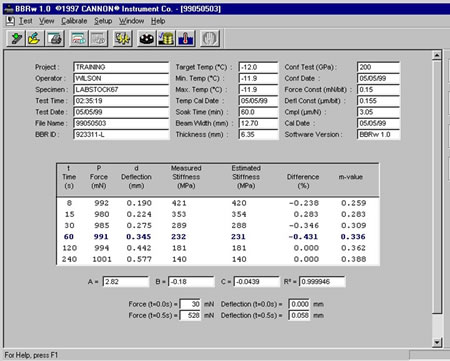
BBR testing evaluates two primary parameters: creep stiffness and stress relaxation rate. Creep stiffness in BBR testing is defined as the measure of the thermal stresses created in an asphalt binder as a result of thermal contraction. It is an important property that helps to evaluate the performance of asphalt binders. It is a parameter utilized to evaluate the potential for cracking in the asphalt pavement. The creep stiffness is determined using the Bending Beam Rheometer (BBR) by applying a static stress to a beam of bitumen and measuring the resultant strain rate.
Stress relaxation rate signifies the capability of the asphalt binder to alleviate stress over time, thus precluding pavement cracking. The determinants of the stress relaxation rate in an asphalt binder include:
-
Binder type
-
Air void content
-
Bonding stress
-
Temperature
-
Aging
The bending stress relaxation rate calculated using a Bending Beam Rheometer is ascertained by applying a static stress to a beam of bitumen and calculating the strain rate to deduce the stiffness of the beam.
Creep Stiffness
Creep stiffness refers to the asphalt binder’s resistance to deformation under a constant load, a measurement taken at 60 seconds. The BBR test calculates this by applying a static stress to a beam of bitumen and recording the strain rate. Regular measurements of beam deflection are taken at intervals of:
-
8 seconds
-
15 seconds
-
30 seconds
-
60 seconds
-
120 seconds
-
240 seconds
These measurements, under the influence of an applied load and shear force equation, are then used to compute the beam or creep stiffness.
The importance of measuring creep stiffness at 60 seconds is that it offers a precise time point to evaluate the stiffness of the material under load. This measurement is generally utilized in the form of the Bending Beam Rheometer (BBR) test to assess the performance of pavement materials.
Stress Relaxation Rate
Stress relaxation rate indicates the ability of the asphalt binder to relieve stress over time, preventing pavement cracking. The factors that determine the stress relaxation rate in an asphalt binder include:
-
Binder type
-
Air void content
-
Bonding stress
-
Temperature
-
Aging
The stress relaxation rate is determined using a Bending Beam Rheometer (BBR) by applying a static stress to a beam of bitumen and calculating the strain rate to determine the stiffness of the beam.
A higher stress relaxation rate implies better ductility and resistance to cracking, which contributes to enhanced pavement quality. By measuring the stress relaxation rate, engineers can gain valuable insights into the performance of asphalt binders and make informed decisions regarding pavement design, construction, and maintenance.
Test Time and Factors Affecting Results
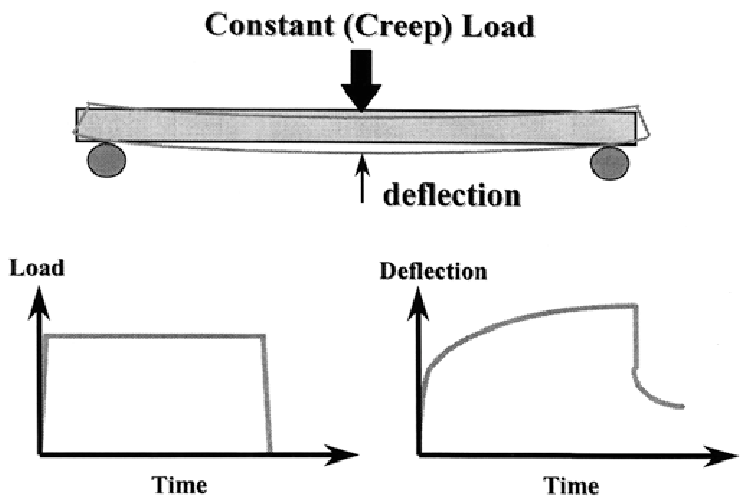
The typical duration of a Bending Beam Rheometer (BBR) test can vary; however, the beam rotation and deflection is usually measured at the following time intervals:
-
8 seconds
-
15 seconds
-
30 seconds
-
60 seconds
-
120 seconds
-
240 seconds
Factors such as heating time and cooling rate can affect the results of a BBR test.
Heating time can have a considerable influence on the results of a BBR test, as the exact conditions and length of heating, such as temperature and conditioning time, can have an effect on the stiffness and creep behavior of the bitumen beam.
Minimizing Heating Time
Reducing heating time is imperative for obtaining precise BBR test results and warding off sample degradation. One strategy to accomplish this during a BBR test is to pre-condition the beams in the BBR bath at the test temperature for 60 minutes before initiating the test. The heating time during a Bending Beam Rheometer test influences the sample by allowing it to reach a specific temperature, a crucial factor in evaluating the binder’s low-temperature stiffness and relaxation properties.
Minimizing heating time in BBR tests can improve the accuracy of the results by minimizing the potential for physical hardening of the asphalt binders. Physical hardening is the stiffening of the asphalt binder due to prolonged exposure to high temperatures. By reducing the heating time, the binders are less likely to experience physical hardening, thereby allowing for more precise measurement of their stiffness and performance characteristics.
Avoiding Excessive Cooling
Avoiding excessive cooling during the BBR test helps maintain sample integrity and ensures accurate measurements. Excessive cooling in BBR tests can lead to hardening of the beam, thus causing greater variability in test data. To ensure the correct temperature is maintained throughout the BBR test, two independent platinum RTD temperature transducers can be used to control and monitor the test temperature. Additionally, utilizing a test bath can provide temperature stability during the test.
Excessive cooling during BBR testing may be attributed to positioning the beams in the BBR bath at an inappropriately low temperature and utilizing an improper cooling medium. To preclude excessive cooling, it is imperative to select a suitable cooling medium and method that allows for a controlled and gradual cooling of the specimen. Moreover, it is advisable to monitor the cooling process closely and ensure that the specimen is not exposed to rapid temperature changes.
Comparing BBR with Other Testing Methods
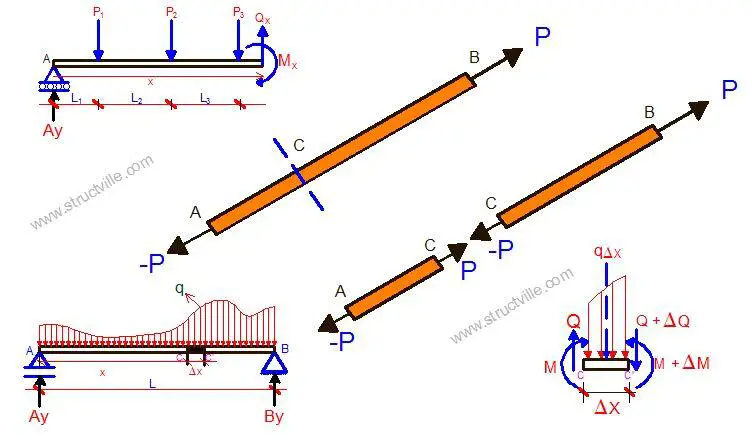
Other testing methods for assessing asphalt binder performance include:
-
Apparent Viscosity of Non-Newtonian Bitumens (ASTM D4957)
-
Hveem and Marshall Mix Tests
-
Accelerated Mixture Performance Test (AMPT)
-
Disk-shaped Compact Tension (DCt) Test
-
Indirect Tension Test (IDT)
These methods provide valuable insight into the performance characteristics of asphalt binders and mixtures. However, BBR testing offers several advantages over these methods, which we’ll explore in the following subsections.
BBR testing is mainly utilized to assess the rigidity and rate of stress relaxation of asphalt binders at lower temperatures, whereas Dynamic Shear Rheometer (DSR) testing is employed to ascertain the performance grade (PG) of asphalt binders at intermediate and higher temperatures.
Advantages of BBR
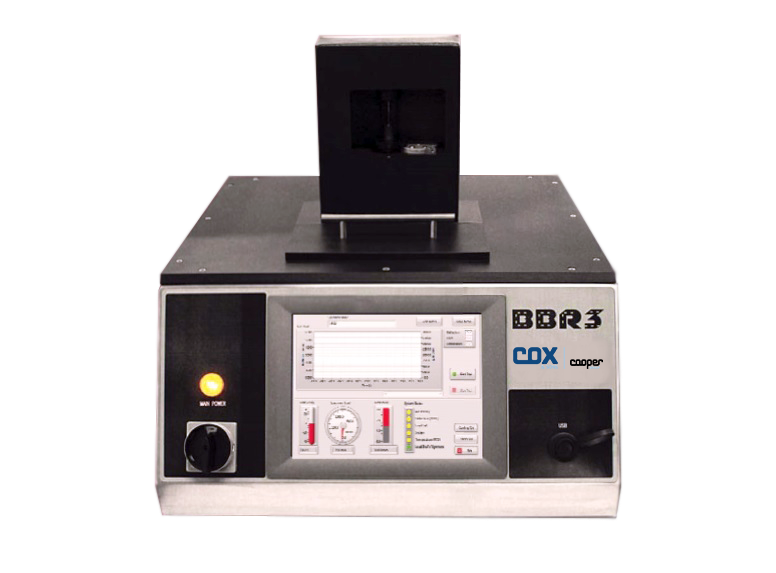
Employing Bending Beam Rheometer (BBR) in asphalt testing presents various benefits, including:
-
Practical construction
-
Energy efficiency
-
Minimal environmental impact
-
Easy equipment accessibility
Moreover, BBR testing sheds light on the low-temperature performance of asphalt binders, aiding in predicting potential pavement cracking.
BBR testing effectively overcomes the challenges posed by other testing methods through its unique approach and capabilities. By measuring low-temperature stiffness and relaxation properties of asphalt binders using the BBR test, engineers and technicians can make informed decisions regarding the design and maintenance of pavements, as well as to predict the behavior of asphalt pavements more accurately.
Consequently, BBR testing offers a comprehensive and effective approach to testing pavement quality, addressing the limitations and challenges posed by other testing methods.
Limitations and Challenges
Despite its advantages, BBR testing also has some limitations and challenges. These include:
-
Drawbacks associated with specimen preparation and testing conditions
-
Difficulty in acquiring a sufficient quantity of asphalt binder for test specimens
-
The incapability of estimating the proper cracking temperature of the binder based solely on BBR critical temperature.
Researchers or technicians conducting BBR tests may encounter challenges such as:
-
The requirement for regular calibration of the BBR device
-
Ensuring exactness and accuracy in measuring cracking temperature
-
Addressing potential fluctuation in test results
-
Verifying the effects of varying factors on the test outcomes
It is crucial to address these challenges to ensure the accuracy and reliability of BBR test results.
Real-World Applications of BBR Testing
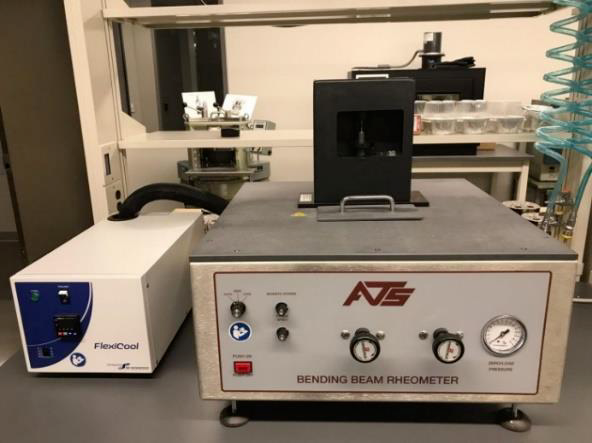
BBR testing holds significant relevance in practical applications like enhancing pavement quality and pinpointing problematic asphalt binders. The results from a BBR test guide engineers and contractors in choosing suitable asphalt binders for specific climates and conditions, thereby ensuring durable pavement performance.
By identifying problematic asphalt binders through BBR testing, timely corrective actions can be taken, preventing costly pavement failures and ensuring road safety. This knowledge helps engineers make informed decisions regarding pavement design, construction, and maintenance.
Improving Pavement Quality
BBR test results help engineers and contractors select appropriate asphalt binders for specific climates and conditions, ensuring long-lasting pavement performance. By analyzing the results of the BBR test, engineers can ascertain if the binder meets the required specifications and identify any potential issues that may affect the performance of the asphalt pavement. This information assists in selecting suitable asphalt binders for pavement construction, confirming that the pavement can resist low temperatures without fracturing or failing.
BBR testing also assists in assessing the crack resistance and strength of asphalt mixtures, enabling the formation of more resilient and long-lasting pavements. These approaches assist in selecting asphalt binders and designing asphalt mixtures that have good cracking resistance and durability, contributing to long-lasting pavement performance.
Identifying Problematic Asphalt Binders
Identifying problematic asphalt binders through BBR testing allows for timely corrective actions, preventing costly pavement failures and ensuring road safety. BBR testing assists in determining potentially troublesome factors of asphalt binders, including:
-
Low-temperature performance
-
Cracking
-
Raveling
-
Compliance errors
In light of the results from BBR testing of problematic asphalt binders, corrective actions may include adjusting the binder content, modifying the binder grade, or incorporating additives to enhance the low-temperature performance of the asphalt. By taking these corrective actions, engineers and contractors can ensure the quality and durability of pavement materials, ultimately leading to safer and more reliable roadways.
Summary
In summary, the Bending Beam Rheometer (BBR) test plays a crucial role in determining asphalt binder performance and ensuring pavement quality. By measuring key parameters such as creep stiffness and stress relaxation rate, BBR testing provides valuable insights into asphalt binder behavior at low temperatures. The test results help engineers and contractors select appropriate binders for specific conditions, design durable pavements, and identify problematic asphalt binders. Despite some limitations and challenges, BBR testing remains an indispensable tool in the realm of pavement engineering, contributing to safer and more reliable roadways for all.
Certified MTP has an elite selection of Mix Marshall Design tools and equipment, showcasing industry-leading brands for Marshall Stability Test Systems, Marshall Compactor Test Equipment and Molds, Marshall Water Baths for Asphalt Testing, and Sample Ejectors for Asphalt Extrusion.
Frequently Asked Questions
How is a bending beam rheometer test done?
A Bending Beam Rheometer test is done by applying a load to the center line of an asphalt beam that is simply supported and immersed in a cold liquid bath, measuring its deflection against time.
What is the temperature for the BBR test?
The BBR test is conducted at a temperature 18°F (10°C) higher than the low temperature specification, meaning for a PG 64-22 asphalt binder the test temperature would be 10°F (-12°C).
What is beam bending?
Beam bending is the deformation of a beam when subjected to a transverse load, causing it to bend due to internal stresses developed in the beam. The combination of a passive supporting material combined with an active volume changing material at a common interface is known as the bending beam method and can be observed in the direction and shape change of elements of a beam under bending.
What is the Bending Beam Rheometer (BBR) test used for?
The BBR test is used to evaluate the low-temperature stiffness and relaxation characteristics of asphalt binders, providing a basis for determining pavement quality and performance.
How does BBR testing help improve pavement quality?
BBR testing helps to select the right asphalt binder for a given climate and conditions, thus improving pavement quality by enabling better design of durable pavements.
